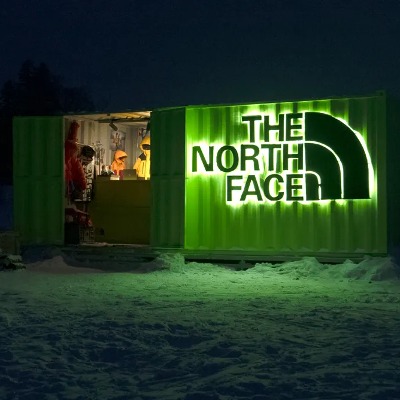Glacier Report From The Austrian Alpine Club Released

The volunteer glacier surveyors of the Austrian Alpine Club observed or measured 93 glaciers in Austria for their current glacier report: All but one retreated in the 2022/23 glacier budget year. Compared to last year's report, the former ice giants have become shorter on average by 23.9 m from 2022 to 2023. This is not only the third highest value in the 133-year history of the Alpine Club Glacier Measurement Service, but also in the last seven years. Austria's largest glacier, the Pasterze (Carinthia), has the highest loss in length, with a new negative record value of 203.5 m for this glacier, followed by the Rettenbachferner (Tyrol) with 127.0 m. For the Austrian Alpine Association, the glacier must be protected without exception and their precursors are more urgent than ever.
An “Austrian landmark” continues to melt rapidly. Never before have the volunteer glacier surveyors of the Austrian Alpine Club measured a greater retreat in length at the Pasterze: Compared to last year's glacier report, Austria's largest glacier retreated in length by a total of 203.5 m, a negative record value for the Pasterze. In total, the Pasterze at the glacier tongue lost 14.03 million m³ of ice, which corresponds to a cube with an edge length of 241 m (almost the height of the Danube Tower in Vienna).
Glacier budget year “extraordinarily unfavorable for glaciers”
“In general, the 2022/23 glacier budget year in Austria was extremely unfavorable for glaciers,” informs Gerhard Lieb, who, together with Andreas Kellerer-Pirklbauer, is the scientific director of the Alpine Association glacier measurement service. Like Kellerer-Pirklbauer, Lieb works full-time at the Institute for Geography and Spatial Research at the University of Graz. “24 glacier surveyors from the Alpine Club observed or measured a total of 93 glaciers in Austria for the current 2022/23 glacier report: All glaciers except one retreated in length. Almost 99 percent of the observed glaciers became smaller. The Bärenkopfkees in the Glockner Group remained stationary.”
Three record values within the last 7 years
The average retreat amount of the 79 glaciers measured in both 2022 and 2023 was -23.9 m. The trend was determined for 14 other glaciers using photo comparisons or multi-year values. In the 133-year history of the Alpine Club Glacier Measurement Service, this is the third highest value behind those of the measurement years 2021/22 with -28.7 m and 2016/17 with -25.2 m - so all three negative record values were achieved within the last 7 years . “A late, but very long and warm melting period in 2023 was once again the main cause of the extremely unfavorable conditions for glaciers,” analyzes Andreas Kellerer-Pirklbauer from the Austrian Alpine Club. And further: “A new absolute temperature maximum of 15.7°C was measured on the glaciated Sonnblick on July 11, 2023.”
Largest retreat in Carinthia and Tyrol
The maximum retreat amounts in the 2022/23 reporting year were significantly higher than in the previous year, in which no glacier retreated by more than 100 m. In the current reporting year, the five glaciers with the highest retreat amounts were the Pasterze (Carinthia, Glockner Group) with the new record value for this glacier of 203.5 m, the Rettenbachferner (Tyrol, Ötztal Alps) with 127.0 m, the Sexergertenferner (Tyrol, Ötztal Alps) with 93.7 m, the Schlatenkees (East Tyrol, Venice Group) with 92.8 m and the Fernauferner (Tyrol, Stubai Alps) with 68.0 m.
Glacier report as a “warning signal for climate policy”
According to the Alpine Club's glacier report, there is no longer any glacier in Austria that has a breeding area that can even come close to preserving the existing ice mass. “The Austrian glaciers only exist because of the ice reserves that have accumulated in the past,” inform Lieb and Kellerer-Pirklbauer. According to the heads of the Alpine Club Glacier Measurement Service, the current report can therefore be read “as a warning signal for climate policy”.
Without exception, glacier protection is more urgent than ever
For years, the Austrian Alpine Club has been pointing out the urgent and unconditional protection of glaciers. According to the Alpine Association, particularly destructive developments on previously untouched glacier areas are anything but contemporary in times of climate crisis. “A rethink of politics is urgently needed here! We must now move towards nature-friendly tourism - development of previously untouched glacier areas is an overexploitation of nature,” emphasizes Nicole Slupetzky, Vice President of the Austrian Alpine Association, who, through her father, the geographer and glaciologist Prof. Heinz Slupetzky, was exposed to the subject of glaciers from childhood is very connected. According to the Alpine Association, the demand for absolute glacier protection, which includes not only the glacier areas but also the glacier forelands - the areas that have been ice-free for 170 years - and moraines, is more urgent than ever. “For us, developing new glaciers and glacier forefields clearly means crossing a red line,” emphasizes Slupetzky.
For example, there are currently expansion plans for the “Pitztal Glacier” ski area, where three glaciers that have not yet been developed for skiing could be built. The expansion plans for the “Kaunertal Glacier” ski area would even open up one of the largest remaining glacier areas in the Eastern Alps, the Gepatschferner. It was only in March that the Tyrolean state government determined that an environmental impact assessment was mandatory for these plans. In the decision, the responsible authority refers to the serious environmental impacts that are to be expected and assumes, for example, intolerable impacts on the protected landscape and recreational value.
Glacier measurement service in numbers
The glacier measuring service of the Austrian Alpine Club has been observing the glaciers in Austria for 133 years and meticulously recording their changes in length. Additional measurements of flow velocities and surface height changes are being carried out on some glaciers, which also show massive decreases in ice height and movement speeds. The glacier reports and photo documentation from the Alpine Club archives provide a unique picture of the development of glaciers in the Eastern Alps and are of scientific national and international relevance. The two heads of the Alpine Club Glacier Measurement Service Mag. Dr. Gerhard Karl Lieb and MMag. Dr. Andreas Kellerer-Pirklbauer was presented with 19 reports from 17 sub-areas in 12 mountain groups by 24 area managers (“glacier surveyors”) for the 2022/23 glacier report. The measurement campaigns took place between August 14th. and October 12, 2023.
Statistics: Glacier retreat in numbers (measurement period 2022/2023)
10 biggest declines - length losses in meters:
1. Pasterze (Carinthia, Glockner Group) -203.5
2. Rettenbachferner (Tyrol, Ötztal Alps) -127.0
3. Sexergertenferner (Tirol, Ötztal Alps) -93.7
4. Schlatenkees (Tyrol, Venice Group) -92.8
5. Fernauferner (Tyrol, Stubai Alps) -68.0
6. Gepatschferner (Tyrol, Ötztal Alps) -67.0
7. Freiwandkees (Tirol, Glocknergruppe) -65.8
8. Marzellferner (Tyrol, Ötztal Alps) -49.9
9. Frosnitzkees (Tirol, Venice Group) -46.0
10. Alpeinerferner (Tyrol, Stubai Alps) -43.4
The average retreat amount of the 79 glaciers measured in both 2022 and 2023 was -23.9 m. In the 133-year history of the Alpine Club glacier measurement service, this is the third highest value behind those of the measurement years 2021/22 with -28.7 m and 2016/ 17 with -25.2 m - all three negative record values were achieved within the last 7 years.
Largest declines per mountain group in meters:
- Glockner Group: Pasterze -203.5
- Ötztal Alps: Rettenbachferner -127.0
- Venice group: Schlatenkees - 92.8
- Stubai Alps: Fernauferner - 68.0
- Zillertal Alps: Wildgerloskees - 29.7
- Ankogel
- Hochalmspitz group: Western. Trippkees - 22.2
- Silvretta group: Jamtalferner - 19.8
- Goldberg group: Ö. Wurtenkees-Schareck - 18.7
- Dachstein: Gr. Gosu Glacier - 9.1
- Schober Group: Red Button Kees - 6.7
- Granatspitz group: Landeckkees - 5.7
- Carnic Alps: Eiskar Glacier - 2.3
Largest declines per federal state in meters:
- Carinthia Pasterze -203.5
- Tyrol Rettenbachferner -127.0
- Salzburg Ödenwinkelkees - 37.9
- Vorarlberg Ochsentaler Glacier - 15.0
- Upper Austria Gr. Gosu Glacier - 9.1
Average withdrawal amounts over the last 12 years in meters. The three highest values are highlighted:
- Glacier report 2022/23: -23.9
- Glacier report 2021/22: -28.7
- Glacier report 2020/21: -11.0
- Glacier report 2019/20: -15.0
- Glacier report 2018/19: -14.3
- Glacier report 2017/18: -17.2
- Glacier report 2016/17: -25.2
- Glacier report 2015/16: -14.2
- Glacier report 2014/15: -22.6
- Glacier report 2013/14: -10.3
- Glacier report 2012/13: -15.4
- Glacier report 2011/12: -17.4
Comprehensive glacier report & information All results and detailed analyzes of the current analysis of the local glaciers can be read in the Alpine Club magazine Bergauf #2.2024 ( www.alpenverein.at/bergauf )














